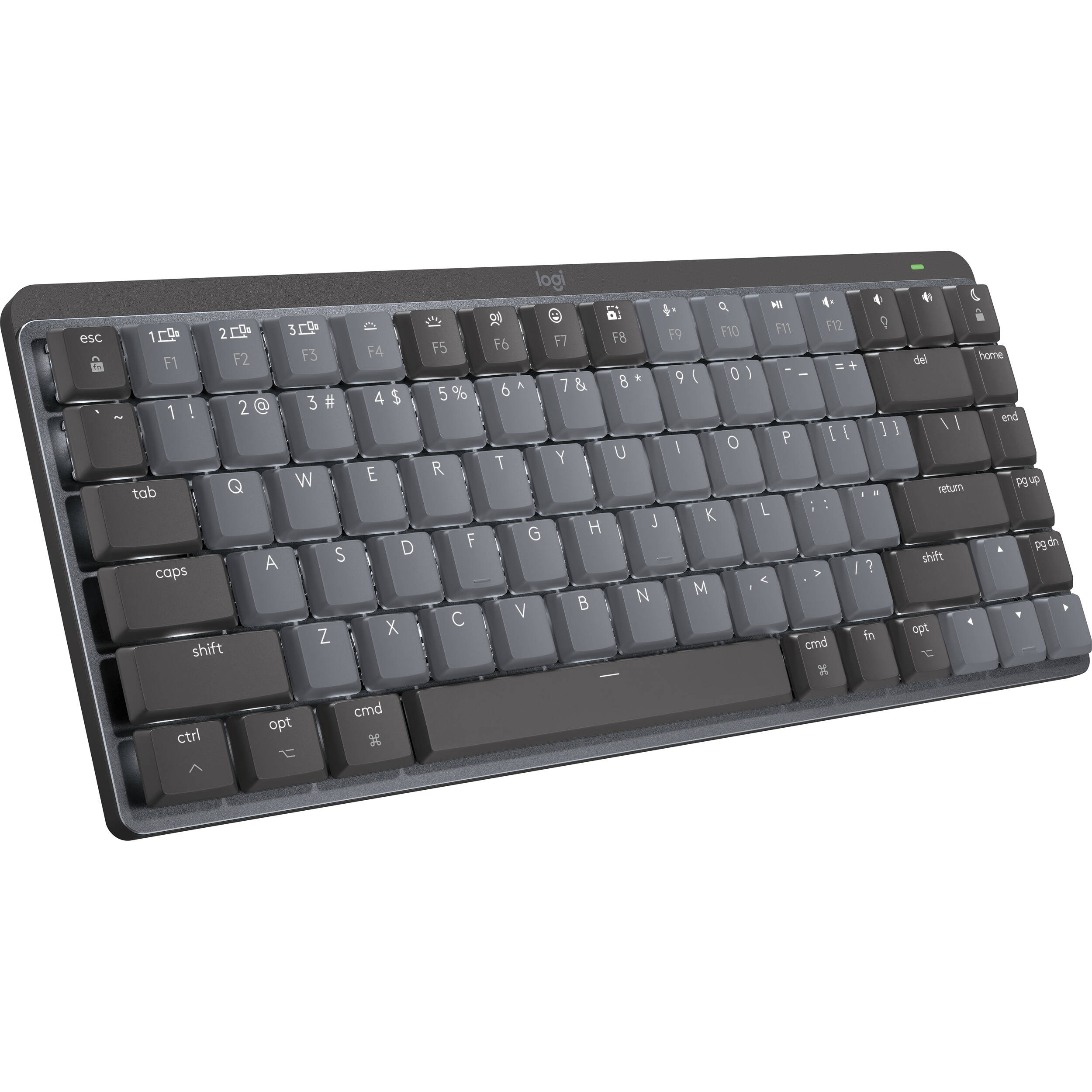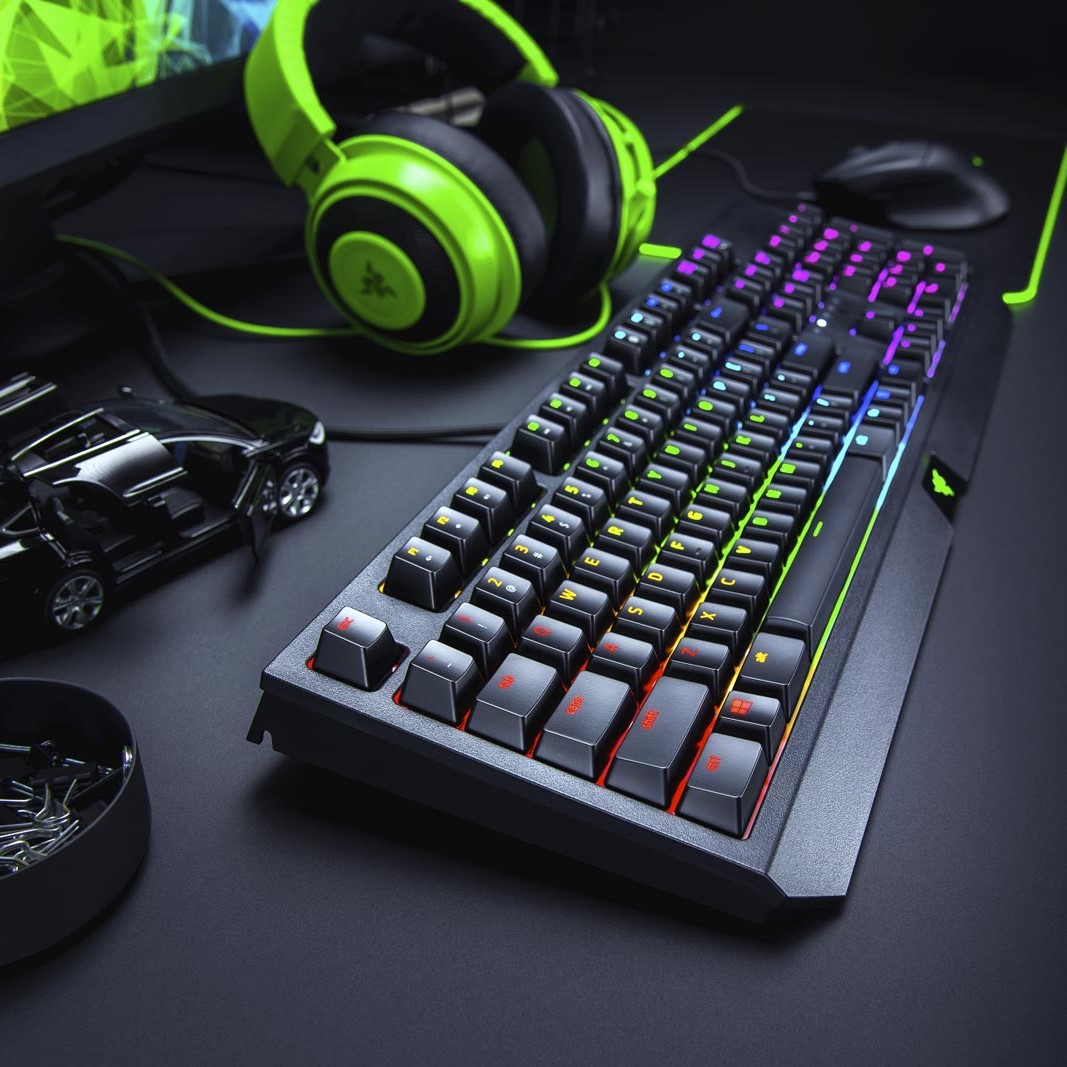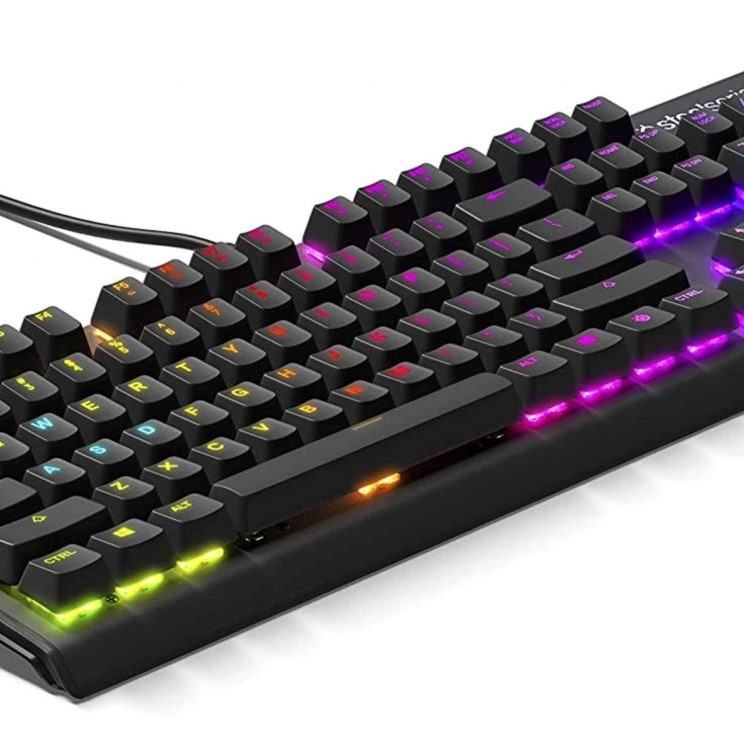Introduction: The Need for Quiet
In a world where noise pollution continually intrudes on our daily lives, finding ways to minimize distractions has become essential, especially in work and home environments. Enter the quiet mechanical keyboard—a perfect fusion of tactile feedback and reduced noise. As more professionals shift to remote work and students study from home, there’s a growing demand for mechanical keyboards that don’t disrupt the peace.
Whether you’re an avid gamer, a writer, or someone who just enjoys a pleasant typing experience, the appeal of quieter alternatives to traditional keyboards can significantly enhance your productivity. This article will delve into the benefits of silent mechanical keyboards, highlight top models on the market, and offer insights into how choosing a quieter option can revolutionize your typing experience.
Overview of Mechanical Keyboards
Mechanical keyboards are a staple for many typists and gamers. They offer tactile feedback and a satisfying click with each keystroke. This makes them preferred over other keyboard types, such as membrane or dome-switch keyboards. However, not all mechanical keyboards are the same. They can vary greatly in terms of loudness.

Most mechanical keyboards use individual switches under each keycap. These switches consist of several parts, including a stem, spring, and housing. It’s the switch’s design that largely determines the sound the keyboard makes.
The noise level of a mechanical keyboard often links to the kind of switch it has. Common switch types include linear, clicky, and tactile. Linear switches offer a smooth keypress without much noise. Tactile switches give audible feedback, indicating the activation of a key. Clicky switches, known for their ‘click-clack’ sound, are the loudest.
But some users prefer a quiet workspace or gaming environment. For them, the noise can be a distraction or even a nuisance. That’s where quiet mechanical keyboards come into play. Manufacturers produce quiet versions to cater to this need. These keyboards use switches designed to minimize noise while still providing the mechanical feel.
In conclusion, mechanical keyboards are loved for their reliability and tactile response. Yet, their noise levels can be a concern for some users. Luckily, quiet mechanical keyboard options are available, marrying the best of both worlds: precision and tranquility.
Key Factors Contributing to Keyboard Noise
When assessing why mechanical keyboards are noisy, we must consider several factors.
Switch Type
The switch type is paramount. Clicky switches make a distinct sound when activated. Tactile switches also produce a sound but are less noisy than clicky ones. Linear switches are the quietest among the common types.
Keycap Material
The material of keycaps affects sound. Hard materials like ABS or PBT plastic can create a louder clack. Softer materials help dampen the noise.
Keyboard Plate Construction
The construction of the keyboard plate can amplify or absorb sound. Metal plates can increase noise levels. Materials like plastic or silicone can reduce them.
Bottoming Out
‘Bottoming out’ occurs when keys are pressed all the way down. This action can cause a louder sound. A lighter touch can make typing quieter.
Keyboard Design
The overall design factors in as well. Keyboards with more open cases can cause sound to resonate. Compact designs can lessen the noise.
Understanding these factors can help in choosing a quiet mechanical keyboard or reducing keyboard noise. These elements interplay to produce the unique sound signature of every mechanical keyboard.
 Technologies Behind Quiet Mechanical Keyboards
Technologies Behind Quiet Mechanical Keyboards
Technological advancements have led to the development of quiet mechanical keyboards. These innovations are designed to reduce the noise typically associated with mechanical keyboards, while maintaining their tactile response. Here are some of the key technologies used to create these silent typing tools:
Switch Dampeners
Manufacturers use small rings or pads, known as dampeners, to cushion the impact of the keycap when it’s pressed. This results in a softer landing, lessening the sound of bottoming out. These dampeners can be made from various materials like rubber or foam.
Silent Switch Designs
Silent switch technology is pivotal in quiet mechanical keyboards. These switches have internal structures modified to minimize noise. They also feature built-in dampening to absorb the sound of the actuation and release of a key.
Advanced Keycap Material
Quieter keyboards often feature keycaps made from softer materials that naturally absorb sound. This reduces the sharp ‘clack’ that comes from harder materials. The shape of the keycaps can also direct sound away from the user.
Sound-Dampening Case Foam
To mitigate resonance inside the keyboard, designers use foam padding in the case. This foam absorbs vibrations and prevents sound from amplifying within the keyboard’s body.
Enhanced Stabilizers
Larger keys, such as spacebars, enter, and shift keys, can cause more noise due to their size. Improved stabilizers are used in these keys to ensure a quieter operation without sacrificing performance.
By integrating these technologies, manufacturers have succeeded in producing quiet mechanical keyboards that offer the benefits of mechanical switches with a much-reduced noise footprint. These keyboards provide a comfortable and silent environment, whether for work or play.
Comparing Different Quiet Mechanical Keyboard Models
When exploring quiet mechanical keyboards, it’s essential to compare different models to find one that best suits your needs. We’ll look at various aspects such as switch type, materials used, and unique features that set them apart.
Entry-Level Quiet Mechanical Keyboards
Entry-level models are a great starting point for those looking to experience the benefits of a quieter typing solution without a significant investment. These typically feature:
- Basic silent switch designs with soft materials to dampen noise.
- Minimal sound-dampening features in the keyboard case.
- Standard keycap materials that offer quieter typing than traditional keyboards.
Mid-Range Quiet Mechanical Keyboards
This category offers a balance between price and performance, with additional features:
- Enhanced silent switch technology and more effective dampeners.
- Keyboards may include sound-dampening foam inside the case.
- Better quality keycaps and stabilizers for reduced sound and improved typing feel.
High-End Quiet Mechanical Keyboards
For enthusiasts and professionals, high-end models boast premium features:
- Top-of-the-line silent switches and advanced dampening systems.
- High-quality, sound-absorbing keycap materials and design.
- Refined stabilizers and robust construction materials for maximum noise reduction.
- Additional customization options like programmable keys and RGB lighting.
By carefully comparing these models, you can select a quiet mechanical keyboard that provides the perfect blend of silence, comfort, and functionality for your workspace or gaming setup.
 The Impact of Silent Keyboards on Gaming and Typing
The Impact of Silent Keyboards on Gaming and Typing
The transition to quiet mechanical keyboards has led to a significant change for both gamers and typists. Here’s how silent keyboards are impacting these activities:
For Gamers
- Improved Focus: Reduced noise from quiet mechanical keyboards means fewer distractions, allowing gamers to concentrate better on their gameplay.
- Enhanced Stealth: The softer keystrokes are an advantage in gaming environments where silence is strategic, such as stealth missions.
- Comfort in Long Sessions: Less noise can reduce ear fatigue during long gaming sessions, providing a more comfortable experience.
For Typists
- Increased Workplace Harmony: Silent keyboards create a quieter work environment, which is crucial in shared or open-plan offices.
- Reduced Fatigue: The gentle sound of a quiet mechanical keyboard can lead to less auditory stress and increased comfort during long typing periods.
- Better Sound Environment: For those working in audio-sensitive fields, such as recording studios, the minimized keyboard sound can prevent unwanted noise interference.
Both gamers and typists benefit from the noise reduction that quiet mechanical keyboards offer. The advantages extend beyond individual comfort to potential improvements in shared spaces and specialized work settings.
How to Choose the Right Quiet Mechanical Keyboard
Selecting the right quiet mechanical keyboard can be a challenging task. Here are some steps to guide you:
Assess Your Needs
Start by evaluating your requirements. Consider the environment in which you’ll use your keyboard. Note your preferences for switch types and key feel. Think about how much you can spend.
Research Switch Types
Focus on switches known for being quiet—such as linear switches. Read about different switch brands. Some brands specialize in quiet switches.
Keycap Material Matters
Softer keycap materials like silicone or PBT can minimize noise. Heavier materials might make typing louder.
Check for Dampening Features
Good quiet keyboards have dampening technologies. Look for keyboards with switch dampeners or case foam.
Stabilizers Are Important
Notice the quality of stabilizers, especially for larger keys. They should be stable and not too noisy.
Build Quality and Design
A well-built keyboard can naturally reduce noise. See if the keyboard design focuses on noise reduction.
Read Reviews and Test
Go through user reviews. If possible, test the keyboard before buying. Personal experience can seal the deal.
Choosing the right quiet mechanical keyboard involves thought and investigation. Reflect on your needs, do thorough research, and test your options where possible. With the right approach, you can find a keyboard that’s both quiet and enjoyable to use.
 The Future of Mechanical Keyboards and Noise Reduction
The Future of Mechanical Keyboards and Noise Reduction
The mechanical keyboard industry continues to innovate, especially in the realm of noise reduction. Future mechanical keyboards are likely to deliver even quieter performance without sacrificing the tactile response that users love. Here’s what we can expect going forward:
- Continued Innovation: Silent switch technology will keep evolving. New materials and designs are likely to appear.
- Integrated Sound Dampening: We may see a standard where keyboards come with built-in sound-dampening materials.
- Improved Keycap Construction: Keycap design could develop further to reduce noise. Innovations in shape and material are anticipated.
- Enhanced Switch Variety: There might be more variants of switches. Each could offer distinct levels of sound and tactile feedback.
- Customization Options: We may have more customization for users to tweak their keyboard’s sound profile.
- Eco-Friendly Materials: As sustainability becomes important, manufacturers might use recyclable materials that also aid in noise reduction.
- Sound Profiles for Workspaces: Keyboards might come with preset sound profiles suited for different environments, like offices or studios.
- Noise-Canceling Tech: Future keyboards might explore active noise-cancellation techniques to reduce typing noise further.
In pursuing these advancements, the industry aims to enhance user experience, provide adaptive solutions for various settings, and address the growing demand for quiet mechanical keyboards. As development in this sector continues, users can look forward to typing and gaming in even more peace and quiet.
Maintenance Tips for Keeping Your Mechanical Keyboard Quiet
Keeping your quiet mechanical keyboard in top shape requires regular maintenance. Here are simple yet effective tips:
Clean Regularly
Dirt and debris can affect how your keys feel and sound. Use a keycap puller to remove the caps and gently clean your keyboard often.
Lubricate the Switches
Proper lubrication can keep keystrokes smooth and quiet. Use a suitable switch lube and apply it carefully to the moving parts.
Tighten Loose Parts
Loose components can cause additional noise. Check for any loose keycaps or stabilizers and secure them as needed.
Replace Worn Out Dampeners
Dampeners wear out over time. Inspect them periodically and replace if they show signs of degradation.
Update Firmware
Some quiet mechanical keyboards have software controls for noise. Keep the firmware up-to-date for optimal performance.
Use on Soft Surfaces
Placing your keyboard on a desk mat can reduce noise. Choose a padded surface to dampen the sound further.
By following these simple maintenance steps, you can ensure your quiet mechanical keyboard stays silent and functions at its best for a long time.
 Final Thoughts: The Future of Quiet Mechanical Keyboards
Final Thoughts: The Future of Quiet Mechanical Keyboards
The demand for quiet mechanical keyboards solidifies their status as a mainstay in the market. As technology advances, it’s likely that manufacturers will continue to innovate, offering even quieter options without sacrificing the tactile feedback that users have come to love.
The combination of comfort, customization, and reduced noise ensures that these keyboards appeal to a wide audience, from gamers to office workers. Embracing the advantages of a quiet mechanical keyboard enhances your typing experience and ultimately allows you to focus on what matters most—productivity, creativity, and enjoyment.
Learn from this guide, explore various options, and choose a quiet mechanical keyboard that adapts to your lifestyle and enhances your performance. Whether you’re typing up reports, gaming with friends, or simply enjoying a casual chat online, a quiet mechanical keyboard will transform your experience into something uniquely satisfying. Happy typing!